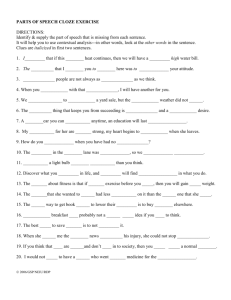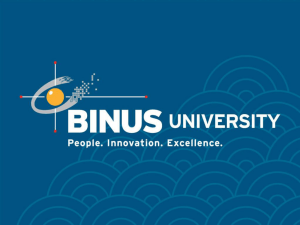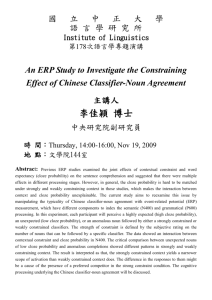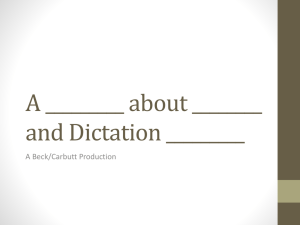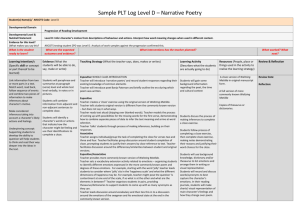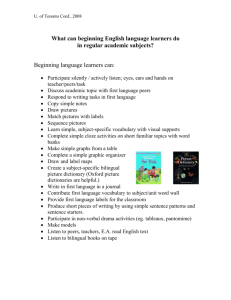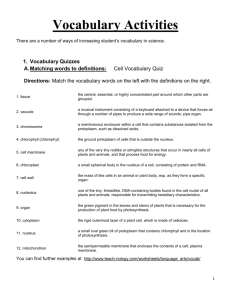Restoring C-texts
advertisement
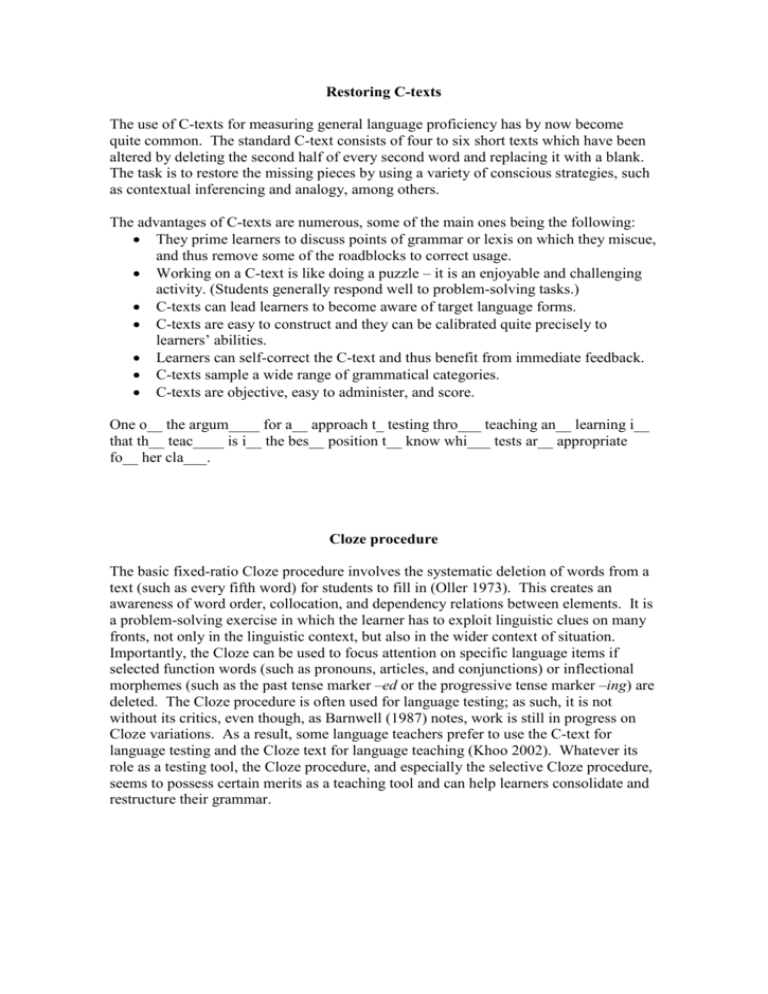
Restoring C-texts The use of C-texts for measuring general language proficiency has by now become quite common. The standard C-text consists of four to six short texts which have been altered by deleting the second half of every second word and replacing it with a blank. The task is to restore the missing pieces by using a variety of conscious strategies, such as contextual inferencing and analogy, among others. The advantages of C-texts are numerous, some of the main ones being the following: They prime learners to discuss points of grammar or lexis on which they miscue, and thus remove some of the roadblocks to correct usage. Working on a C-text is like doing a puzzle – it is an enjoyable and challenging activity. (Students generally respond well to problem-solving tasks.) C-texts can lead learners to become aware of target language forms. C-texts are easy to construct and they can be calibrated quite precisely to learners’ abilities. Learners can self-correct the C-text and thus benefit from immediate feedback. C-texts sample a wide range of grammatical categories. C-texts are objective, easy to administer, and score. One o__ the argum____ for a__ approach t_ testing thro___ teaching an__ learning i__ that th__ teac____ is i__ the bes__ position t__ know whi___ tests ar__ appropriate fo__ her cla___. Cloze procedure The basic fixed-ratio Cloze procedure involves the systematic deletion of words from a text (such as every fifth word) for students to fill in (Oller 1973). This creates an awareness of word order, collocation, and dependency relations between elements. It is a problem-solving exercise in which the learner has to exploit linguistic clues on many fronts, not only in the linguistic context, but also in the wider context of situation. Importantly, the Cloze can be used to focus attention on specific language items if selected function words (such as pronouns, articles, and conjunctions) or inflectional morphemes (such as the past tense marker –ed or the progressive tense marker –ing) are deleted. The Cloze procedure is often used for language testing; as such, it is not without its critics, even though, as Barnwell (1987) notes, work is still in progress on Cloze variations. As a result, some language teachers prefer to use the C-text for language testing and the Cloze text for language teaching (Khoo 2002). Whatever its role as a testing tool, the Cloze procedure, and especially the selective Cloze procedure, seems to possess certain merits as a teaching tool and can help learners consolidate and restructure their grammar.

